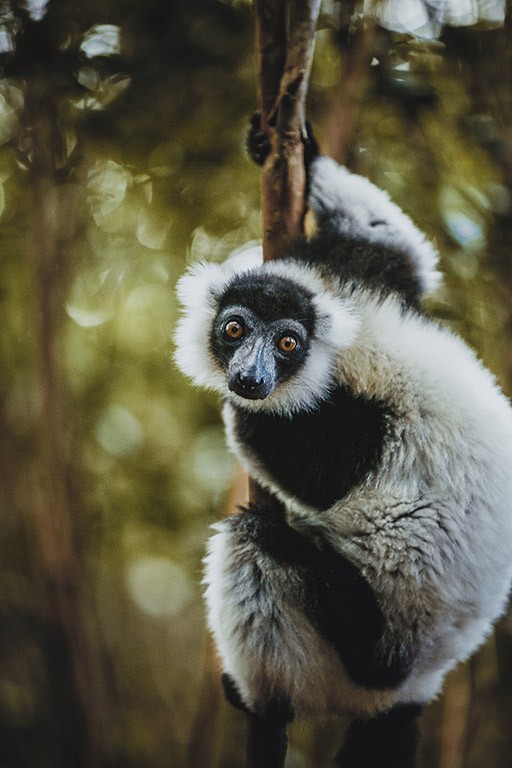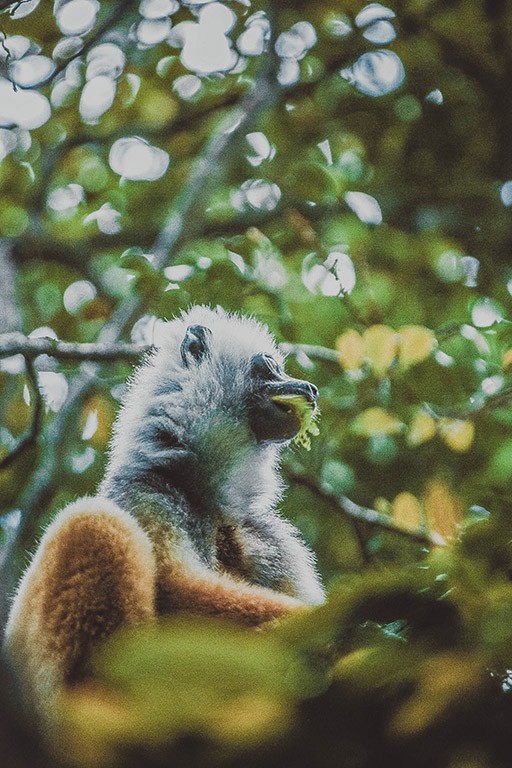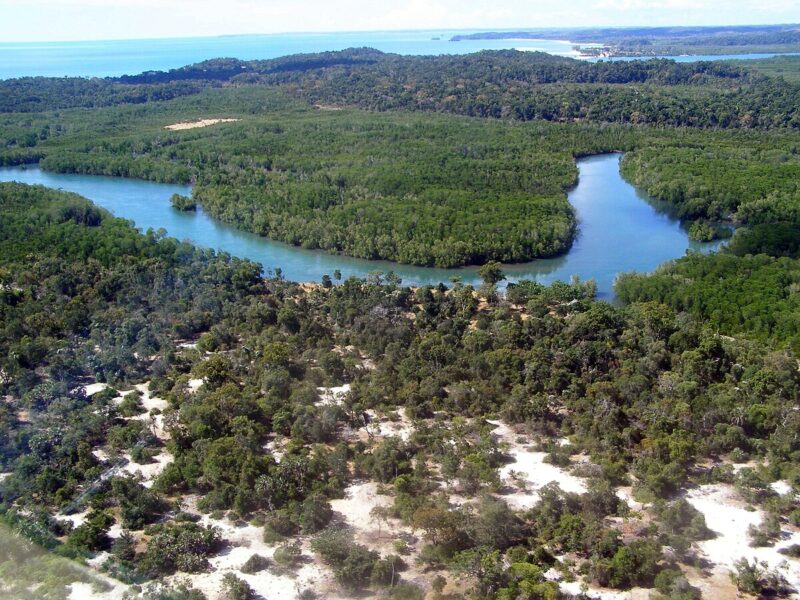
the Indri Indri is from the Indridae family. The adult size can reach 75 to 90 cm, the largest of the current lemurs. It is the only one which has just a tiny tail. Weighing around 8 to 12 kg and can live up to 40 years. It lives in the tropical rain forests of eastern Madagascar. The region most conducive to its observation is ANDASIBE (a small nature reserve of 810 ha at an altitude of 1000 meters). Diurnal, living in small groups of 2 to 10 individuals not exceeding a territory of 7 ha, the Indri indri is rather folivorous. Its diet consists of 32 different leaf species, making it impossible to breed in captivity. That is to say about 1.5 kg of leaves per day. The Indri indri rarely goes ashore, and only does so when he feels a bitter taste in his stomach, so he neutralizes it by eating some dirt. The Indri Indri becomes adult at the age of 7-9 years and gives birth to only one young per litter with a gestation of 6 months, only once every 2 or 3 years. Mating in November. The baby clings to its mother’s belly, stops sucking after 8 months. Then the little Indri is able to move alone through the trees. Possess several strange, prolonged and modulated cries (communication, love, alert, …) with a voice of great power (audible for miles around). Madagascar’s largest carnivore (the Fosa) and raptors are predators of their young, so frightened, the adults move by successive jumps from trunk to trunk. And it is always the female who decides which direction the group should take. Each night, the Indri chooses a horizontal branch to lie down. Sometimes two family members sleep huddled together. The smaller one sleeps with his mother while the older one usually sleeps with his father. Indris are active during the day. They wake up several hours after dawn and choose a place to sleep 2-3 hours before sunset. the Indri Indri does not move at night unless threatened by high winds or predators.





